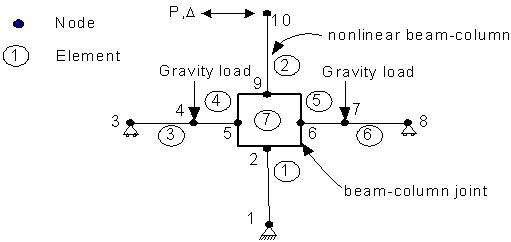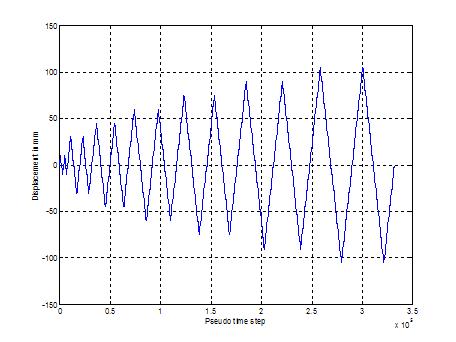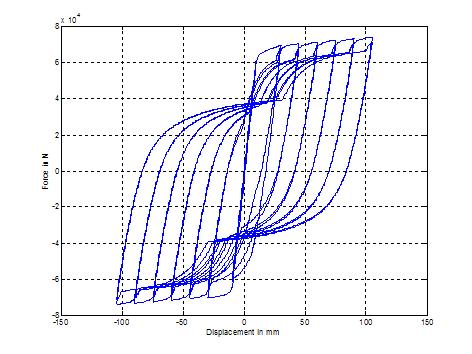BeamColumnJointExample: Difference between revisions
(Created page with ' The example files (PR1.tcl, procMKPC.tcl, procUniaxialPinching.tcl, procRC.tcl) create a model of a RC beam column sub-assemblage. The cruciform is subjected to constant gravi...') |
No edit summary |
||
| Line 1: | Line 1: | ||
The example files (PR1.tcl, procMKPC.tcl, procUniaxialPinching.tcl, procRC.tcl) create a model of a RC beam column sub-assemblage. The cruciform is subjected to constant gravity load at nodes 4 and 7 and pseudo-static cyclic lateral load under displacement control at node 10. The beam-column-joint region (element number 7) is represented using a beamColumnJoint element, and the beams and columns (element numbers 1 through 6) are modeled using the nonlinearBeamColumn element. The beam-column joint consists of 13 components that may have different material constitutive models; in this example 9 of the 13 components utilize the nonlinear material model – Pinching4. | The example files (PR1.tcl, procMKPC.tcl, procUniaxialPinching.tcl, procRC.tcl) create a model of a RC beam column sub-assemblage. The cruciform is subjected to constant gravity load at nodes 4 and 7 and pseudo-static cyclic lateral load under displacement control at node 10. The beam-column-joint region (element number 7) is represented using a beamColumnJoint element, and the beams and columns (element numbers 1 through 6) are modeled using the nonlinearBeamColumn element. The beam-column joint consists of 13 components that may have different material constitutive models; in this example 9 of the 13 components utilize the nonlinear material model – Pinching4. | ||
| Line 5: | Line 4: | ||
[[Image:BeamColumnJointExample.jpg]] | [[Image:BeamColumnJointExample.jpg]] | ||
The displacement history for node 10 is as shown below. | |||
[[Image:BeamColumnJointExample2.jpg]] | |||
The p-delta response of cruciform, along with the response of each of the nonlinear joint components is shown below. | |||
[[Image:BeamColumnJointExample3.jpg]] | [[Image:BeamColumnJointExample3.jpg]] | ||
The shear panel response shows the moment-curvature relationships whereas the bar slips at the beam top and bottom are represented by the force-slip plots | |||
[[Image:BeamColumnJointExample4.jpg]] | [[Image:BeamColumnJointExample4.jpg]] | ||
Revision as of 23:06, 31 March 2010
The example files (PR1.tcl, procMKPC.tcl, procUniaxialPinching.tcl, procRC.tcl) create a model of a RC beam column sub-assemblage. The cruciform is subjected to constant gravity load at nodes 4 and 7 and pseudo-static cyclic lateral load under displacement control at node 10. The beam-column-joint region (element number 7) is represented using a beamColumnJoint element, and the beams and columns (element numbers 1 through 6) are modeled using the nonlinearBeamColumn element. The beam-column joint consists of 13 components that may have different material constitutive models; in this example 9 of the 13 components utilize the nonlinear material model – Pinching4.
The displacement history for node 10 is as shown below.
The p-delta response of cruciform, along with the response of each of the nonlinear joint components is shown below.
The shear panel response shows the moment-curvature relationships whereas the bar slips at the beam top and bottom are represented by the force-slip plots



